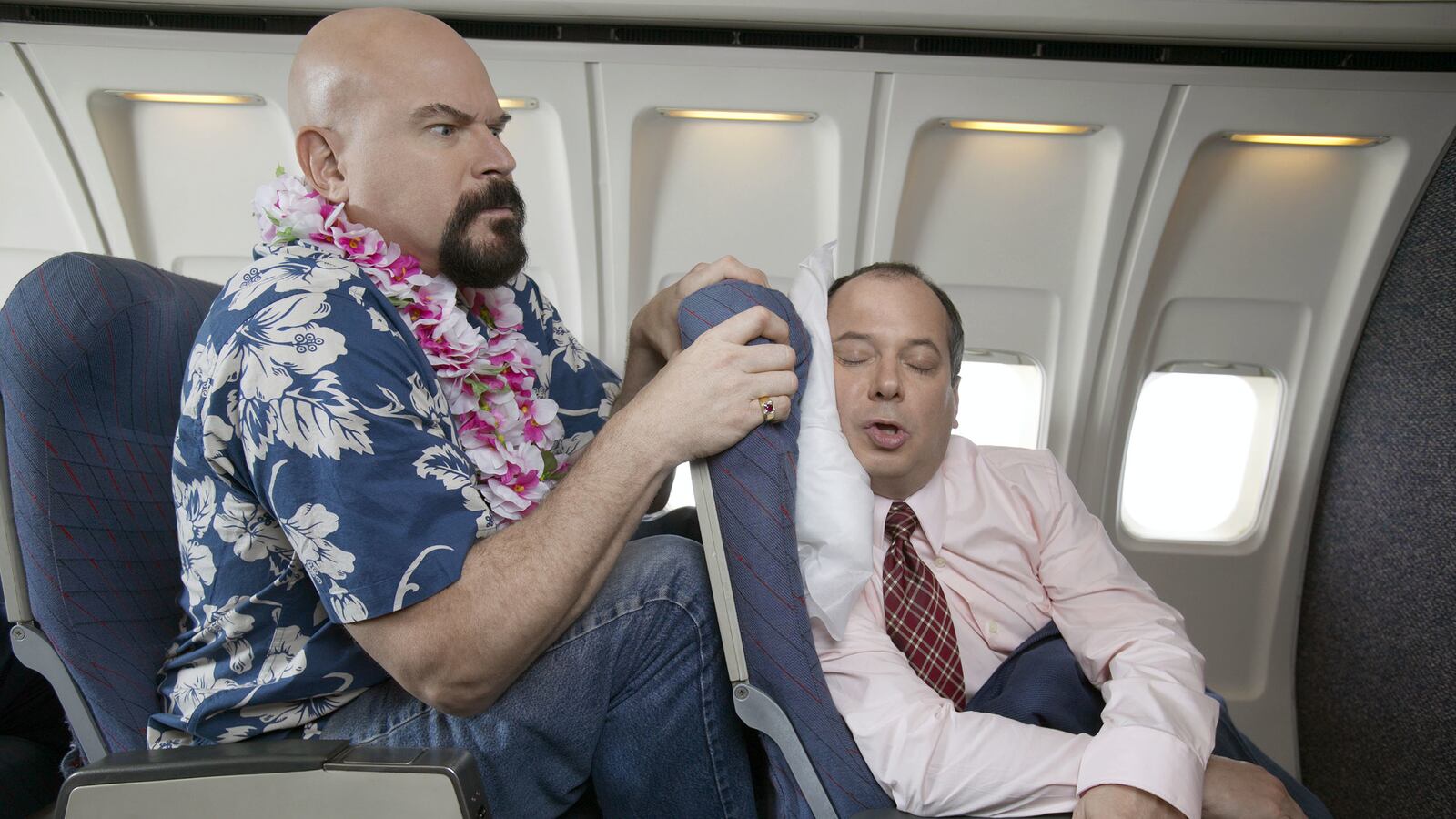It’s a sign of our air-rage times: three separate planes forced to divert in the space of two weeks when cramped passengers went ballistic over someone reclining their seat. In one episode, two undercover air marshals subdued and handcuffed the irate traveler in question. In another, a woman swore at the reclining passenger in front of her and screamed for the pilot to “put this plane down.”
The dust-ups don’t shock Robert Mann, a former airline executive who now runs an airline-industry analysis company. “August is the highest load-factor month of the year for a North American carrier, and it’s not surprising to me that the highest frequency of incidents between passengers occur in that month,” he says. “It’s like rats in a maze. At a certain point they start eating each other.”
But these weren’t random outbursts. Each had a very specific catalyst: the reclining seat, that guilt-inducing, grumble-generating inflight personal-space prerogative. The incidents have sparked wide debate about whether passengers should opt to recline at all.
“There is a simple solution to save us from our worst selves: Get rid of reclining seats,” opined CNN commentator Maria Cardona. A poll of 1,000 passengers on the travel search engine Skyscanner found that 91 percent of them would support eliminating reclining seats on short-haul flights altogether. Over on air-travel forum FlyerTalk.com, many commenters echoed this sentiment: “The recliner [in last week’s incident] was 100% wrong. I really hope this will be the end of reclining seats.”
At this moment, none of the big U.S. legacy carriers—American, United or Delta—have any public plans to install non-reclining seats. But, says Mann, “If the airlines collapse the pitch much more”—pitch being the industry term for legroom—“then [eliminating reclining seats] is going to have to become a consideration.”
Consider Spirit Airlines, the dirt-cheap carrier everyone loves to loathe. Spirit has the highest seating density in the industry, with seat pitches of a knee-crushing 28 inches. (By comparison, Southwest Airlines offers 31 inches). Which is part of why, since 2010, Spirit is also one of two U.S. airlines whose seats don’t recline. (Allegiant Air is the other one). It’s not just a cruelty policy—there’s science behind the sadism.
“When you’re packing that many people in, you’re putting far more weight on the airframe,” says Mann. “So you want everything as light as possible.” Reclining seats weigh much more than non-reclining ones. By eschewing recliners, Spirit’s lighter planes burn less fuel, and can even transport freight to make some extra cash on the side.
What’s more, reclining seats have moving parts, which means maintenance and potential breakage. “If a reclining seat fails to latch properly it has to be taken out of service,” says Mann, costing the airline even more.
Futzing with the seats is already one of the airlines’ favorite ways to cut costs. In July, Boeing announced a new modified version of its bestselling 737. The “improved” aircraft will have the potential to hold 200 seats instead of the current 189, pushing legroom down to 29 inches—unnervingly close to a Spirit-sized seat.
Mann questions whether the new high-density configurations would even pass FAA muster—by federal regulation, airplanes have to be able to completely evacuate in 90 seconds. But they’re certified when they’re built. Once they’re sold, the airline can shove as many seats on board as the design will potentially allow, says Mann. “I don’t think any of these airlines have been vetted for the 90-second evacuation standard with those seat pitches.”
But never mind that. As much as customers love to moan about small, uncomfortable seats, the demand for them is higher than ever. Around the same time it eliminated reclining seats, Spirit Airlines’ revenue started rising. Today, it’s the most profitable airline in America. The reason passengers are flocking to its bolt-upright seats is simple, says aviation analyst Richard Adoulafia: “Price, price, price.” It’s the No. 1 factor—indeed, often the only factor—leisure travelers consider when buying a ticket. “They are very much responsible for their own incarceration.”






